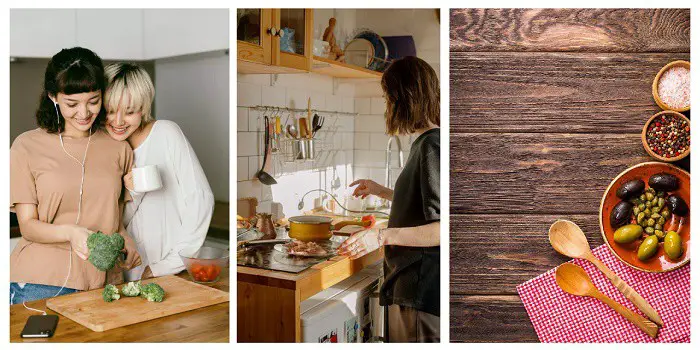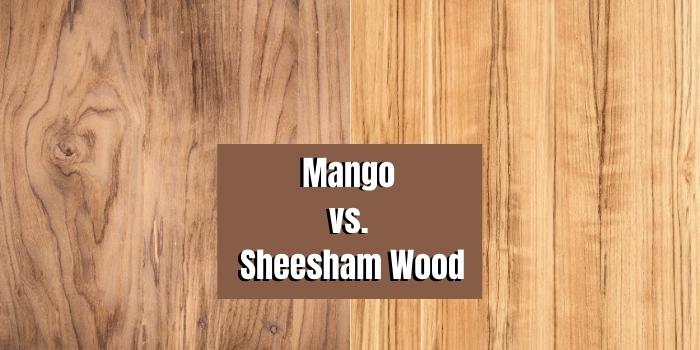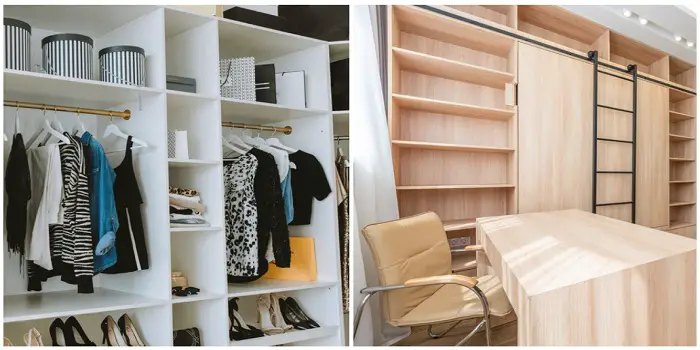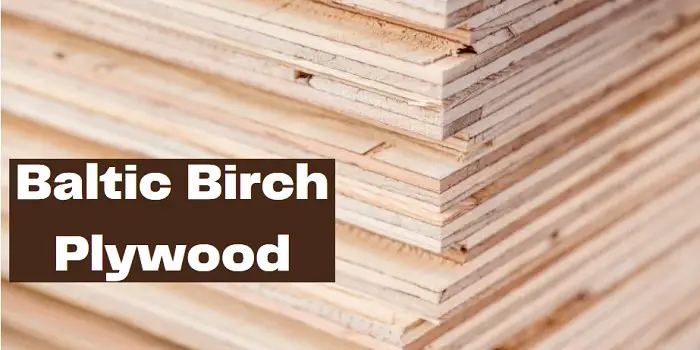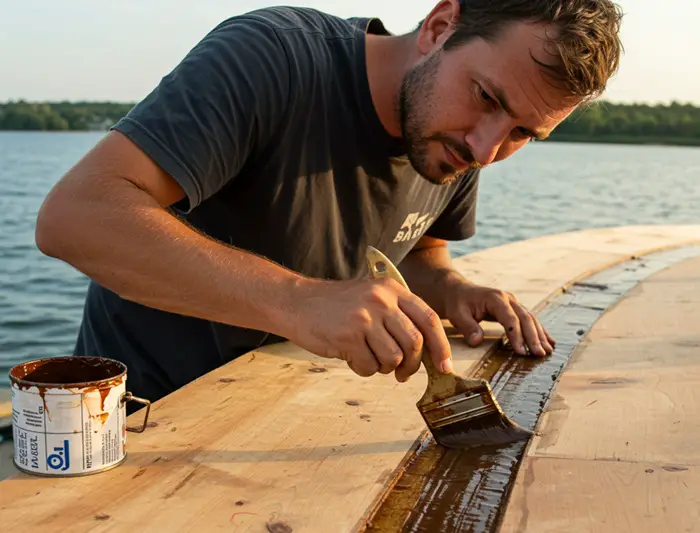
Marine-grade plywood is currently used to construct a variety of different boats all around the globe. It is also a go-to choice for homeowners and contractors to build decks, flooring, and other outdoor purposes.
However, because the sheet of marine grade ply is so high-quality, it’s more expensive than regular plywood. Plus, it’s not readily available in some parts of the world – like if you are planning to buy and install it in rural areas.
These are in fact the biggest downsides of marine-ply, especially when alternative materials might seem sufficient at first glance.
What Can I Use Instead of Marine Ply?
If high cost or unavailability is the issue for you, there are a few marine plywood alternatives available in the market that are almost as durable and lightweight.
Some of these marine plywood substitutes you may need to look at are:
1- Birch Plywood
When it comes to top-notch marine plywood alternatives, birch plywood sails straight into the spotlight. Sourced from the chilly forests of northern Europe, birch is a natural hardwood that moonlights as a go-to option for exterior-grade plywood.
Despite not being solid hardwood through and through, birch plywood holds its own. Its built-in layers—thin sheets of veneer stacked and glued like a very committed lasagna. The outermost layers are called the face and back veneers (think of them as the plywood’s fancy outfit), while the inside layers form the core stock—the real MVPs holding it all together.
What makes birch plywood a favorite among homebuilders and hobbyist carpenters? For starters, its pale tone and silky-smooth texture make it easy on the eyes—perfect for those who want their wood to look good while getting the job done. And let’s not forget its strength and durability: even rookie carpenters can whip up impressive furniture or mini architectural wonders without breaking a sweat.
It’s a multitasker too. From building stylish cabinets and sturdy furniture to crafting dollhouses, doghouses, or even dinosaur-shaped bookshelves—birch has your back. You can leave it untreated for that rustic vibe or treat it if you want to outsmart moisture and bugs.
And the cherry on top? It’s usually cheaper than other marine plywood options, so your wallet won’t cry.
What we loved
- Elegant, smooth finish that’s basically the George Clooney of plywood
- Built to last (and then some)
- Easy to find in most local hardware stores
- Versatile—use it for everything short of building a yacht
What made us raise an eyebrow
- Warm weather makes it wilt faster than a spinach salad
- Without treatment, bugs might throw a party in it
2- Fiber Cement Board
Fiber Cement Board (a.k.a. FCB) is the no-nonsense, all-weather warrior that’s quickly becoming a construction industry favorite. If you’re in a hurry to build but don’t want to compromise on strength or style, FCB might just be your new best friend.
This material isn’t just tough—it’s “survives salty sea air and keeps on going” tough. It laughs in the face of harsh weather, from wind-whipping storms to hail assaults that would leave lesser materials weeping in the corner. Bonus: it’s fire-resistant, moisture-resistant, insect-proof, and won’t rot. Basically, it’s the Chuck Norris of siding options.
FCB also proves you can have your curb appeal and keep it too. It’s available in a variety of colors, and if none of those scream “dream home,” you can paint it any shade you like. Want Mediterranean blue or pastel avocado? Go for it.
Its sleek construction means no overlapping seams, which means mold and mildew can’t sneak in to throw a house party behind your walls. Your home stays clean, tight, and energy-efficient—like a smart house with good skincare.
What we loved
- Outlasts storms like a superhero in a trench coat
- Fireproof, bug-proof, and rot-proof—basically life-proof
- Low maintenance, high reward
- Helps insulate your home and save on energy bills
- Smooth, modern look that still respects traditional charm
What made us pause
- Heavier than your ex’s emotional baggage
- Cutting it kicks up enough dust to make a desert jealous—wear a mask!
- Costs more upfront, both to buy and install
- So smooth it begs to be painted (texture lovers, take note)
3- Fiberboard (Medium Density Board)
Medium-density fibreboard is an engineered wood that’s like particleboard’s sophisticated cousin. It may look like a humble chipboard at first glance but don’t be fooled. MDF is denser, smoother, and doesn’t suffer from the annoying voids or gaps that plague basic particleboard.
What makes MDF so lovable? For starters, it handles temperature and humidity changes like a seasoned yoga instructor—no cracking, no warping, just calm composure. Its consistent structure makes it a dream to cut, drill, or shape—no splinters, no drama. You can even work it with your trusty old toolbox—no fancy tools required.
Budget-friendly and buttery smooth, MDF is a go-to alternative to marine plywood for projects where aesthetics matter. Its clean edges and flawless surface make it a paint magnet. You want crisp, clean finishes? MDF says, “Hold my brush.”
What we loved
- Easy on the wallet without looking cheap
- Finishes, stains, and paint glide on like butter on toast
- No splinters, no fuss—just pure woodworking zen
What made us think twice
- Holds nails and screws about as well as a sponge holds soup—pre-drill or use adhesives for best results
4- Ribbon Grain Plywood
Ribbon Grain Plywood is the showstopper of marine plywood alternatives, named for its signature look. True to its name, this beauty features elegant grain patterns that flow like ribbons down the length of each sheet. It’s the kind of plywood that turns heads before it even becomes part of your build.
But it’s not all good looks—this material means business. Smooth as silk straight from the mill, ribbon grain plywood skips the awkward sanding and finishing phase. Just install it, step back, and admire the natural charm. Whether you’re going for sleek boat flooring or polished interiors, it brings its A-game right out of the gate.
Beyond aesthetics, it’s also strong, resilient, and surprisingly affordable—ideal for budget-conscious builders who don’t want to compromise on elegance.
What we loved
- No need for paint or polish—it’s naturally smooth and fabulous
- Tough as nails (just… prettier)
- Resists cracking like a champ
- That ribbon-like grain? A total visual treat
- A smart, cost-effective choice for boat flooring and more
What made us think twice
- Not quite as indestructible as true marine-grade plywood—looks great, but don’t expect superhero powers
5- Thermo-Lite Board
Looking for a marine plywood alternative that can take a beating and still stay breezy? Meet Thermo-Lite Board—the rot-free, featherweight champion that’s winning over contractors and DIYers alike.
Designed for people who love to rebuild, redecorate, or fix things without needing a forklift, Thermo-Lite is strong, stable, and light enough to install without breaking a sweat (or a back). Perfect for boat interiors, motorhome walls, or even a chic ceiling redo—this board is your go-to for low-hassle, high-performance projects.
Made from a non-absorbent material, Thermo-Lite doesn’t soak up moisture, meaning it won’t bloat, bend, or break down when temps rise or fall. It’s also impact-resistant, so it can handle the occasional bump, thump, or overenthusiastic hammer swing.
What we loved
- Completely rot-resistant—take that, moisture!
- Super lightweight, making it easy to carry, cut, and install
- Built tough to handle impacts and temperature swings like a pro
What made us frown (just a little)
- Doesn’t have the look or charm of real wood—more function than fashion
6- King StarBoard
If marine plywood had a no-nonsense, ultra-practical cousin in the royal family of construction materials, it would be King StarBoard.
Made from high-density polyethylene and manufactured using the high-tech K-Stran process (fancy name, serious precision), this board delivers exceptional flatness, uniformity, and performance—without the hefty marine plywood price tag.
Both sides come with a sleek matte finish straight out of the box, so there’s no need to polish, sand, or laminate. Just install and move on like the productivity king (or queen) you are.
Built for endurance, King StarBoard is stain-resistant, won’t rot, and laughs in the face of peeling laminates—even after years of wear and tear.
It’s a time-saver, a budget-saver, and possibly your new favorite material when it comes to replacements of defective marine plywood installed on boats.
What we loved
- Budget-friendly without cutting corners
- Long-lasting and won’t fade like last summer’s beach towel
- Totally rot-proof
- No peeling, no polishing, no post-installation headaches
- Matte finish = sleek look with zero effort
What made us raise an eyebrow
- It’s plastic, not wood—so if you’re chasing that classic wooden vibe, this isn’t it
- Might sag under extreme heat like it’s had a long day
- Needs proper installation—half measures could lead to bending
7- Weather and Boil Proof Plywood
If your construction project needs a material that can take heat, humidity, and an occasional boiling bath without flinching, WBP (Weather and Boil Proof) Plywood is here to impress.
Glued together with premium melamine or phenolic resin—basically, the superglue of the plywood world—WBP is built for serious endurance. Thanks to its phenolic bond glue line, it holds up in harsh outdoor environments like a champ. Whether you’re building a house, a shelter, or doing concrete shuttering, WBP won’t let you down.
And when we say “boil-proof,” we mean it. These sheets can handle 20 hours in boiling water without losing their cool. So, if your project’s likely to face heavy moisture, intense sun, or surprise monsoons—this plywood’s got your back.
What we loved
- Budget-friendly alternative to marine plywood
- Waterproof and built for wet environments
- Smooth surface—no cracks, no knots, no nasty surprises
What gave us a little pause
- It’s still pricier than basic plywood (but worth it if you hate soggy regrets)
8- Oriented Strand Board
Think of OSB as the no-frills, muscle-bound cousin of plywood—strong, scrappy, and ready for heavy-duty action. Engineered from wood strands (a fancy term for chips and scraps), this board is built by mixing those pieces with wax resin, arranging them in strategic layers, and pressing them into a tight, durable sandwich.
What you get is a wood product that might not win a beauty contest, but it sure packs a punch. Thanks to its layered structure, OSB offers exceptional strength and stiffness, making it ideal for projects where structural integrity is key—like framing, roofing, or other “let’s-not-have-this-collapse” builds.
It’s also budget-friendly and comes in various types and thicknesses. But like all tough guys, it has its weak spots: OSB doesn’t play well with moisture and can puff up if left wet too long. And it’s not the smoothest surface to clean or prettify.
What we loved
- Stronger than standard plywood—built for serious strength
- Comes in various grades and types to match your needs
- Budget-conscious without being flimsy
What gave us a little pause
- Cleaning it? Let’s just say it’s not a smooth experience
- Swells up like a sponge if left in moisture too long
- Too bendy for flooring—unless you like your floor doing the wave
9- Wax Resin Fiberboard
Don’t let the name intimidate you—Wax Resin Fiberboard is basically fiberboard with a fancy upgrade. Made by combining tiny softwood fibers with a wax-resin binder (or sometimes even hydrogen bonding—science is cool like that), this board is then pressed and heated under serious pressure until it becomes a smooth, sturdy, and moisture-resistant champ.
Although it’s not made from solid wood, it holds its own in the durability and water resistance department. That’s why many builders are jumping ship (pun intended) from marine plywood and choosing this lightweight, tough, and budget-friendly option—especially for boat-building or anywhere water wants to sneak in.
It may not have the charming rings or rich cross grains of natural wood, but it’s stable, easy to work with, and light enough to carry without needing a gym membership.
What we loved
- Perfect for multiple projects, including boat-building
- Kind to your budget
- Lightweight and easy to maneuver
- Moisture-resistant—no panic when things get damp
What made us sweat a bit
- Doesn’t offer those lovely natural growth rings (sorry, woodgrain fans)
- Lacks the inner strength of natural wood cross grains
- Vulnerable to high heat—thanks to the wax content, it prefers to stay cool
10- 3M Reinforced Polyurethane Foam
Don’t be fooled by the word foam—3M Reinforced Polyurethane Foam is no squishy couch filler. This high-performance board is condensed, coated with ultra-tough polyurethane, and ready to take on structural and semi-structural construction like a pro.
Lightweight? Check. Rot-resistant? Absolutely. Easy to cut, shape, and screw without splinters flying like confetti? Oh yes. It’s a builder’s dream that doesn’t warp, flake, or throw a fit mid-project.
Available in five densities (ranging from 15 to 26 lbs/ft³), these 4×8 sheets give you the flexibility to pick your strength level—whether you’re making a boat bulkhead or jazzing up some general construction.
And the cherry on top? You don’t need special tools to tame this beast—just your standard toolbox and a little ambition.
What we loved
- Lightweight yet strong—like the superhero of foam boards
- Rot-resistant and warp-proof (so it keeps its cool in damp environments)
- Comes in five different densities for customized strength
- Doesn’t chip, flake, or fuss like regular plywood
Where it could be better
- Polyurethane has a dark side—it absorbs water over time, which can lead to deterioration
- Not exactly eco-friendly—especially when burned (no bonfires, please)
Besides all the above, there is rot-resistant exterior grade plywood built to brave the elements—rain, sun, and everything in between. Its moisture resistance and structural strength make it a go-to choice for boat building and outdoor construction.
Thanks to its cross-grained layers, it stays dimensionally stable and strong, all while being budget-friendly and easy to find.
Though you can bring it indoors, be ready for some extra polishing if you want it to look pretty. And while it’s easier on trees than solid wood, it still isn’t the greenest or the most fire-friendly option out there.
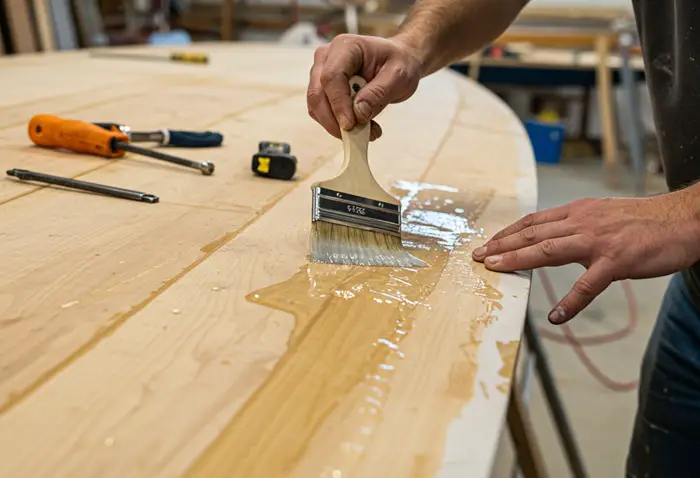
How to Waterproof Ordinary Plywood – Step-By-Step Process
Got some plain old plywood lying around and wondering, “Can I turn this into something boat-worthy?” Great news: you absolutely can.
While converting it might cost more than buying ready-made marine plywood type or its alternatives, sometimes it’s just more convenient (and oddly satisfying) to DIY.
After all, regular and marine plywood isn’t distant cousins—they’re practically siblings, made with similar glue. The difference lies in the finish. So with a little TLC, your basic plywood can be upgraded to handle waves, rain, and the occasional spilled drink.
Step 1: Prep like a pro
Before waterproofing, prep is non-negotiable. Sweep off debris, wipe down dirt, and inspect for cracks or holes. If needed, plug gaps with wood filler—because holes are very un-seaworthy.
Once the filler sets, give the surface a wipe and sand it gently (60–100 grit sandpaper will do the trick).
Step 2: Apply your sealer
You’ve got options:
- Epoxy Sealer – Popular, paintable, and great for sanding.
- Drying Oil – Soaks deep, perfect for humid or high-moisture zones.
- Varnish – Sleek and protective, ideal for above-water use without bulking up.
Use a brush, roller, or sprayer. Just follow the instructions—seriously. Skimming could cost you in effectiveness and safety.
Step 3: Let it dry and seal those sneaky edges
Drying is where the magic happens. Give it 24 hours or whatever the product label tells you. Rushing means ruined waterproofing—and nobody wants soggy wood halfway through a project.
Edges are sneaky moisture magnets. Slap on multiple coats of sealer, leaving at least an hour between layers. The edges will soak up sealant like a thirsty sponge, so layer up until you’ve built a proper barrier.
Once everything’s dry and sealed, your plywood is good to go—whether it’s for boats, backyard benches, or a rainy-day fortress for your dog. Just remember: marine-grade results need marine-level patience.
Final Thoughts
Marine-grade plywood is a fantastic option not only for boats and parts of boats but also for top floors, wood furniture, and sidings outdoors.
Provided you have opted for the real material and not the fake one, you can expect them to last much longer than almost any other type of plywood.
When buying, keep in mind the above alternatives as well. This way, you can hopefully find more affordable options in the market.
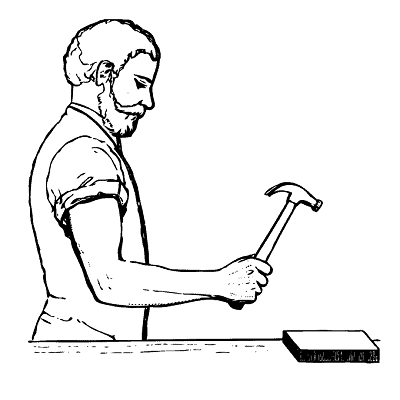
Hi, I am Mark Garner a professional carpenter, woodworker, and DIY painter. I live in the small city of Peoria, Arizona as a semi-retired woodworker. I have started this blog with a simple motive to help you with my wood experience in this sector. If you like to know more about what I love doing and how it all got started, you can check more about me here.

